Rhododendrons are widely appreciated for their beauty and ease of care in favorable growing zones. However, in less ideal areas, these vibrant shrubs can present some challenges, such as leaf scorch and poor blooming. Understanding their basic needs can prevent common issues and ensure their success in your garden.
Azaleas vs. Rhododendrons: What’s the Difference?
While many gardeners use the terms interchangeably, azaleas are actually a subgroup within the rhododendron genus. As the American Rhododendron Society notes, “All azaleas are rhododendrons, but not all rhododendrons are azaleas.” If you’re seeking information specific to azaleas, be sure to consult articles tailored to their care.
This article will focus on growing and maintaining “true rhododendron” species and the tropical vireya varieties.

Quick Guide to Growing Rhododendrons
- Common Names: Rhododendron, rosebay
- Scientific Name: Rhododendron spp.
- Hardiness Zones: USDA zones 4 to 12, depending on variety
- Soil: Well-draining, humus-rich soil
- Light Requirements: Dappled sunlight or partial shade
- Watering: Moderate moisture
- Fertilization: Use an acid-loving plant fertilizer
- Propagation: Propagate through stem cuttings
- Safety Note: Rhododendrons are toxic to pets and humans if ingested
Key Characteristics of Rhododendrons
Rhododendrons are low-maintenance, evergreen shrubs that typically grow to heights of 4 to 6 feet, though some species can reach towering heights of 80 feet in their native environments. Their leathery, dark green leaves range from 3 to 6 inches in length. Dwarf varieties like ‘Ginny Gee’ stay compact at just 1½ feet, while other species can produce large foliage up to 24 inches long.
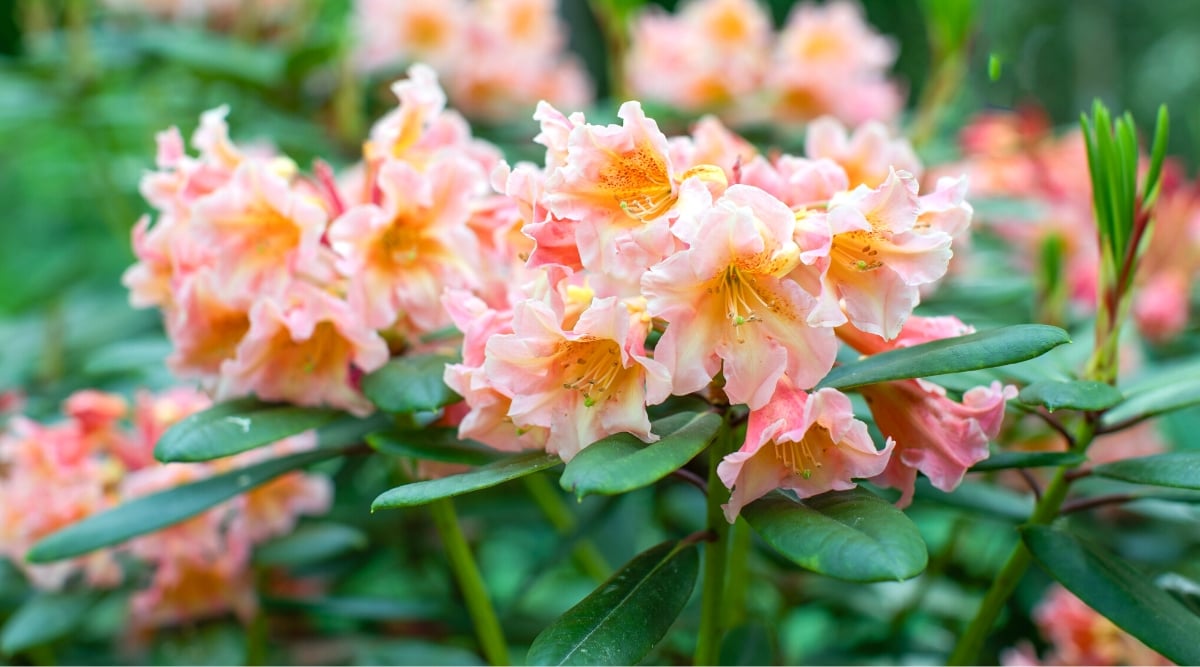
The show-stopping feature of rhododendrons is their clusters of trumpet or bell-shaped blooms. Flower sizes can vary dramatically, from tiny, thimble-sized blossoms to massive 8-inch flowers. In colder climates, most rhododendrons bloom in late spring or early summer, while tropical vireya species may bloom consistently from autumn through spring.
Recommended Rhododendron Varieties
- Rhododendron catawbiense ‘Roseum Elegans’: Known for its rose-colored blooms, this variety thrives in zones 4 to 8 and grows up to 8 feet tall.
- Rhododendron ‘Frank Galsworthy’: A dark-leaved cultivar with purple blooms and a golden splash, growing to 4 feet in zones 6b to 8b.
- Rhododendron ‘Nova Zembla’: This hardy variety reaches 8 feet in height and produces red blooms with darker spots, perfect for zones 4 to 8.
Planting Rhododendrons
For optimal growth, rhododendrons need well-draining soil rich in organic matter. If you have heavy clay soil, consider planting them in a raised bed to improve drainage. The soil should be slightly acidic, with a pH between 4.5 and 6.
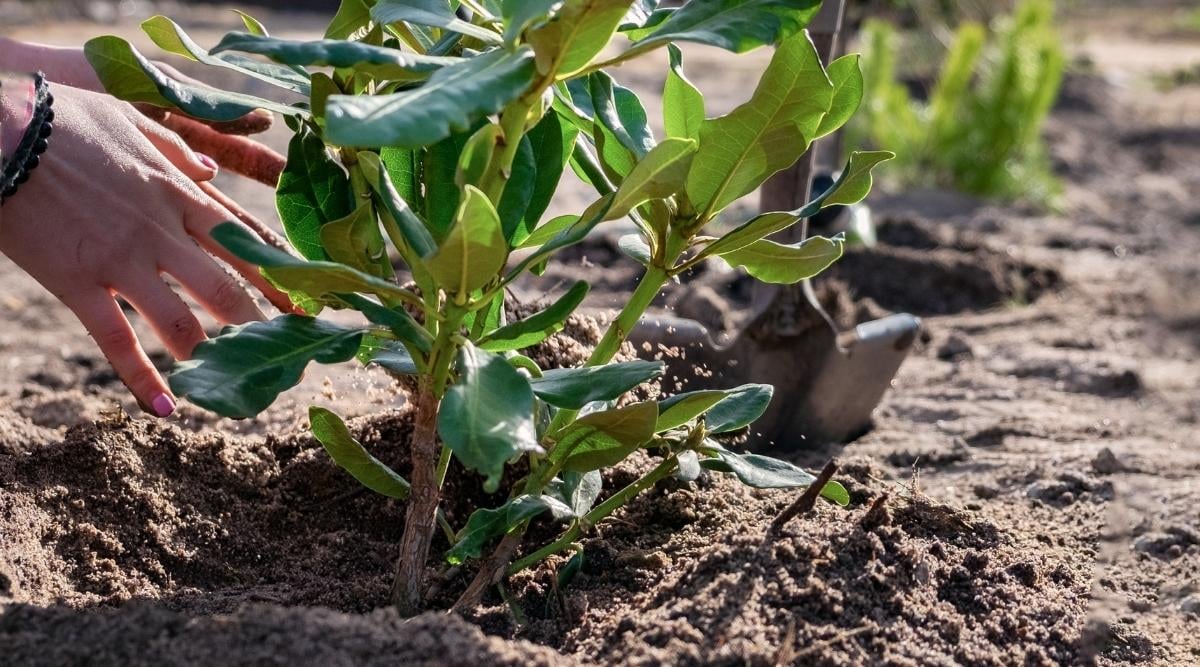
When to Plant Rhododendrons
- Colder climates: Plant in early spring.
- Warmer climates: Fall planting is recommended, although in mild climates, they can be planted almost any time of year.
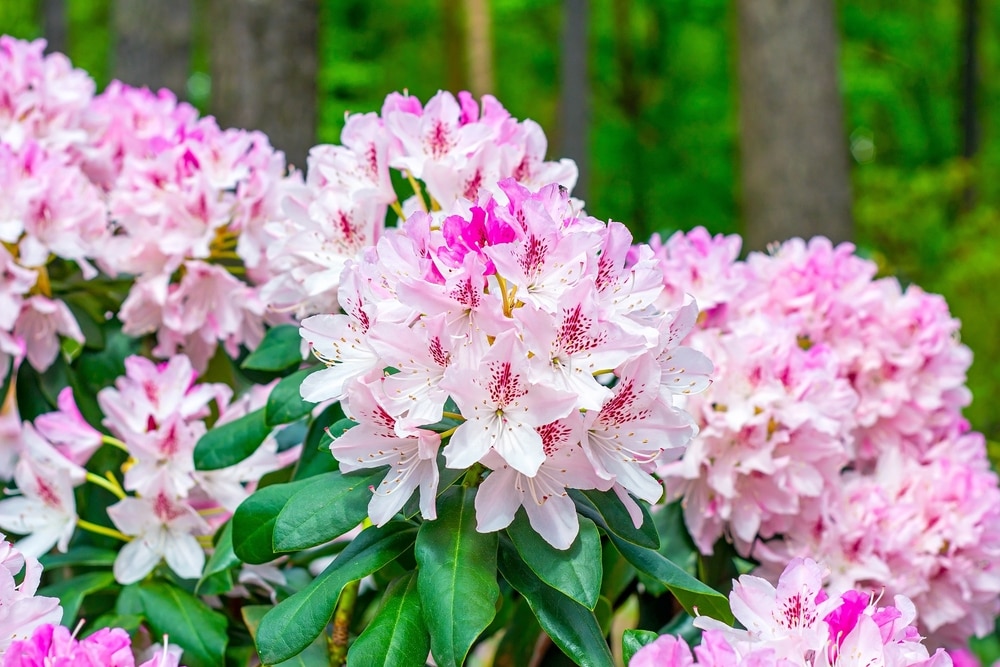
Choosing the Right Location
Rhododendrons prefer locations with dappled sunlight or morning sun, avoiding the harsh afternoon sun. Ideal planting spots include the north or east side of your house, away from concrete structures that could alter the soil’s pH.
Planting Steps
- Remove any wrapping from the root ball, except for biodegradable burlap, which can be opened once the plant is placed in the hole.
- If the roots are tightly bound, make vertical slits to encourage new growth.
- Dig a hole slightly shallower than the depth of the root ball.
- Place the root ball in the hole and fill it in, ensuring the crown is positioned a couple of inches above ground level.
Growing Rhododendrons in Containers
Tropical vireya rhododendrons are well-suited for container growing in regions where they aren’t hardy outdoors. Use white pots to keep their roots cool, and fill them with a mix of 40% coarse perlite, 40% conifer bark, and 20% peat moss. Like their outdoor counterparts, vireya rhododendrons thrive in dappled sunlight and require regular watering.
By following these simple guidelines, you can cultivate a vibrant, healthy rhododendron that will enhance your garden for years to come.
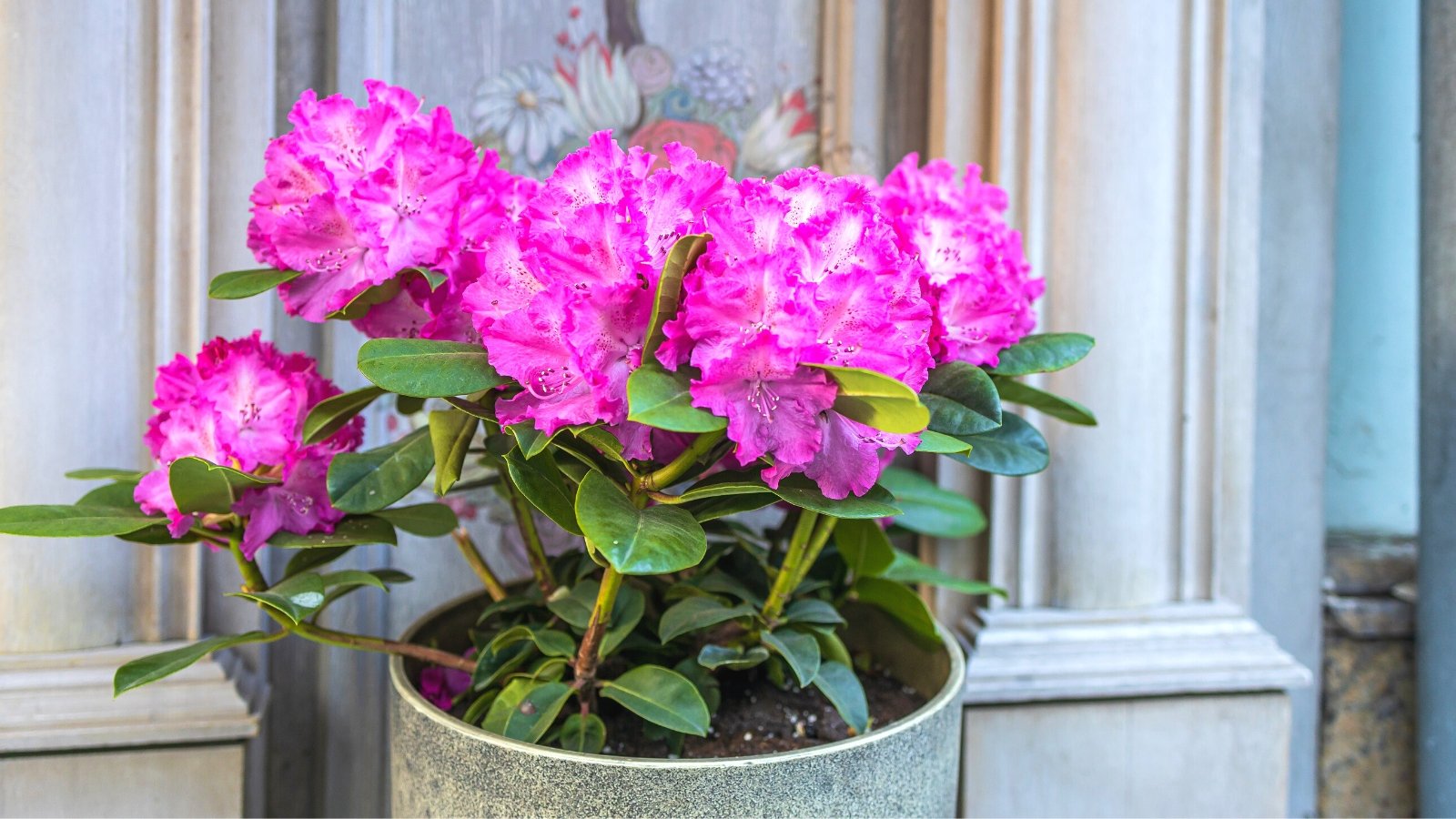
Watering Rhododendrons
Rhododendrons are not drought-tolerant and require consistent moisture due to their fine, shallow root systems. Aim to provide at least 1 inch of water per week, ensuring the soil remains slightly moist at all times. To avoid overwatering, which can lead to root rot, consider using a moisture meter to monitor soil conditions accurately.
Applying a layer of mulch—about 2 inches thick—can help retain soil moisture and keep weeds at bay. Choose coarse, acidic materials such as pine needles or oak leaves to complement the rhododendron’s needs and protect the delicate roots from damage during weeding.
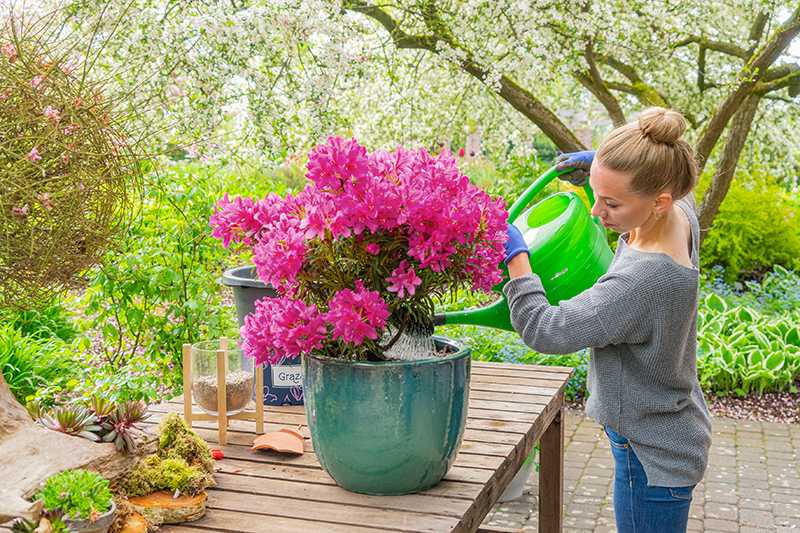
Fertilizing Rhododendrons
Rhododendrons have sensitive roots that can be easily burned by excessive fertilizer. Therefore, limit feeding to once per year in early spring, just as the buds are starting to show color. Use an organic fertilizer formulated for acid-loving plants, such as a 4-3-4 blend. Apply 1 cup of fertilizer for every foot of branch width.
If your soil needs acidification to match the rhododendron’s preference, opt for wettable sulfur or ferrous sulfate rather than aluminum sulfate, which can harm the plant’s roots.
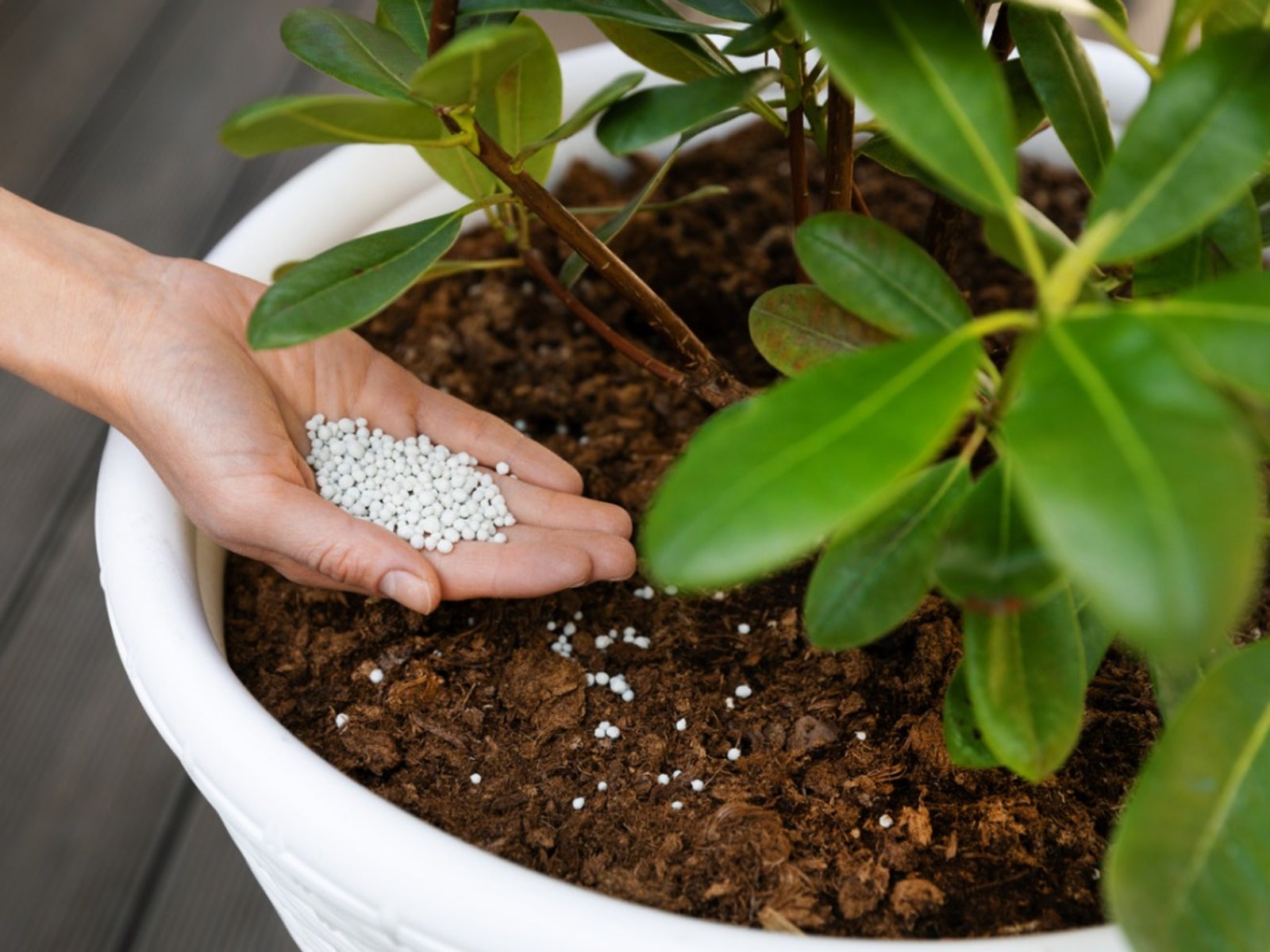
Pruning Rhododendrons
Pruning is minimal for rhododendrons, but deadheading—removing spent flowers—is crucial. Perform deadheading immediately after blooming to prevent damage to the growth buds located just below each flower cluster. If more substantial pruning is needed, do so soon after flowering to avoid cutting off buds that have already formed for the next year.

Propagating Rhododendrons
To propagate rhododendrons, take cuttings from the branch tips in early autumn. The cuttings should be short, with only one whorl of leaves at the top and a leaf node at the bottom. Trim the leaves by half and remove a ½-inch-long vertical strip of bark from the base of each cutting.
Dip the bases in liquid rooting hormone, then plant them in a damp sphagnum moss and perlite mix. Cover the pot with an inverted plastic bag and keep it in bright, indirect light at around 70°F until the cuttings develop roots, which typically takes 3 to 4 months.
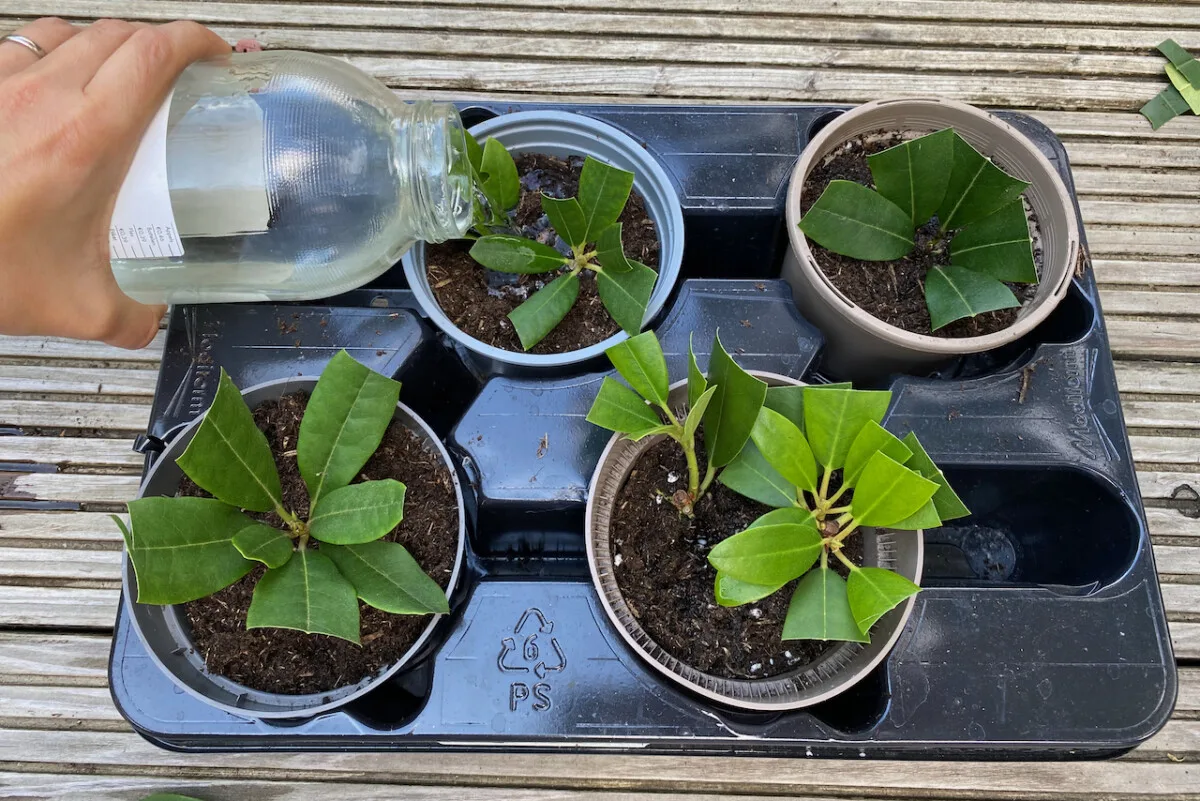
Safety Considerations
Rhododendrons are toxic to both humans and animals. They contain andromedotoxin and grayanotoxin, which can cause serious health issues if ingested. Pets may experience vomiting, diarrhea, weakness, and potentially severe symptoms such as cardiovascular collapse. For people, large quantities of any plant part or honey made from rhododendrons can lead to life-threatening symptoms, including dangerously low blood pressure and slowed heart rate.
Potential Pests and Diseases
Rhododendrons might exhibit curled leaves in response to freezing temperatures, but they usually recover once temperatures rise. Persistent leaf scorch can result from excessive sun, wind, or inadequate watering. To prevent these issues, ensure your rhododendron is planted in a sheltered location with partial sun exposure and is well-mulched to maintain soil moisture.
Preparing Rhododendrons for Winter
Winter care is crucial for rhododendrons to prevent dehydration and damage. With increased sun exposure and reduced moisture during winter, provide a deep watering before Thanksgiving. Ensure the soil remains well-mulched to retain moisture, and consider applying an antidessicant to the plant’s leaves while temperatures are still above freezing. This coating will help minimize moisture loss and protect your rhododendron throughout the winter months.
By following these guidelines, you can ensure your rhododendrons remain healthy and vibrant through every season.
